When people discuss U Wang Young’s achievements, they frequently refer to his opulent real estate ventures and revolutionary resorts. But behind the glittering hotels and billion-dollar investments comes a less visible but equally significant force: marketing. U Wang Young has perfected the art of selling not only items, but also dreams, through branding, narrative, digital engagement, and experiential campaigns.
The article delves into the basic marketing approaches that raised U Wang Young to worldwide prominence—and how his strategies continue to set new benchmarks for luxury brand branding.
1. Storytelling as Strategy
Narrative is key to U Wang Young’s marketing strategy. He does more than only sell properties; he also narrates stories. Whether it’s a beachside home or an alpine hideaway, every project has a fascinating story, purpose, and vision.
His marketing teams create content that transports potential customers and passengers to a lifestyle, sensation, or desire. These storylines pervade everything, including brochures, websites, video content, and even the physical design of the spaces themselves.

For example, a health resort in Bali was more than simply “a place to stay”; it was “a sanctuary designed for soul reconnection,” based on local mythologies and healing traditions.
2. Hyper-Personalized Customer Journeys
U Wang Young recognizes that today’s luxury shoppers expect more than mass marketing; they want individualized experiences. That is why his marketing strategy focuses on data-driven customisation.
His teams use behavioral analytics and AI techniques to track client preferences, purchasing habits, and engagement patterns. This enables for personalized messages, ranging from email advertising to in-person services.
Whether a consumer is a first-time visitor or a frequent investor, they will receive information and offers tailored to their unique interests, such as culinary experiences, architectural design, and exclusive investment previews.
3. Building a Lifestyle Brand, Not Just a Business
U Wang Young does not position his efforts as standalone items. Instead, he established a broad lifestyle brand that embodies sophistication, culture, and luxury. His name has become linked with exceptional encounters.
This branding consistency is apparent in all of his activities. The visual identity, tone of voice, service culture, and digital presence all reflect a refined and curated aesthetic. This cohesiveness increases brand trust and fosters emotional commitment.
Buyers and vacationers aren’t just purchasing a hotel or an apartment; they’re investing in a lifestyle.
4. Exclusivity and Scarcity Marketing
Scarcity is a potent psychological force, and U Wang Young understands how to use it. His playbook includes limited-edition residences, invitation-only events, and investments that need an application.
This generates a sense of urgency and increases perceived value. By restricting certain goods to a limited few, he builds demand and presents his brand as the elite’s option.

For example, before opening a new luxury skyscraper in Singapore, he had a special pre-launch event for high-net-worth individuals, during which only a restricted number of flats were shown. The subsequent hype resulted in a near-sell-out before the public release.
5. Influencer and Celebrity Integration
Rather than formal endorsements, U Wang Young’s method is incorporating high-profile figures naturally into his brand universe. Celebrities, artists, and social media influencers are welcome to stay, invest, or collaborate at his facilities.
These collaborations are delicate and experience-driven, stressing genuineness. Influencers’ photos and videos from his resorts generate interest and increase social proof.
He also works with architects, chefs, and designers with cult followings, making them into brand ambassadors who add cultural value to his houses.
6. Experiential Events That Build Buzz
U Wang Young’s marketing is more than just digital; it is truly immersive. Launches, brand activations, and investor events are immersive experiences that make an indelible impression.
These events are expertly designed and frequently staged at the resorts themselves, featuring live music, gourmet dining, and interactive aspects that reflect the brand’s story. Attendees depart with a strong emotional bond and a memorable experience.
These gatherings serve not merely to promote his brand, but also to foster a sense of community around it.
7. Leveraging Content Marketing and SEO
His marketing teams make significant investments in long-form content that informs, entertains, and engages. From real estate investment tips to behind-the-scenes construction stories, his internet channels are jam-packed with useful content.
SEO-optimized blogs, virtual tours, interviews, and podcasts contribute to thought leadership and organic traffic. This technique not only increases visibility, but also establishes U Wang Young as a reliable voice in luxury development.
His website is more than simply a sales tool; it’s a resource for those interested in luxury living, design trends, and the future of tourism.
8. Strategic Partnerships with Luxury Brands
Co-branding is another effective strategy. U Wang Young routinely collaborates with global luxury brands—fashion houses, automobile manufacturers, and high-end lifestyle labels—for mutual amplification.
These collaborations emerge as pop-up installations, cross-promotional content, and even co-designed rooms or apartments. A recent cooperation with a European luxury automobile produced a limited-edition penthouse that combined automotive and architectural innovation.
These smart agreements let his brand expand into new markets while maintaining its premium positioning.
9. Global Vision, Local Sensitivity
His brand is global, but his marketing is always localized. Every campaign respects and celebrates the cultural nuances of the place in which it operates. Local languages, festivals, architecture, and heritage are woven into the messaging and experiences.
This not only ensures relevancy, but also generates community support. His properties do not feel like foreign impositions; rather, they feel like natural extensions of local culture, which increases credibility and adoption.
10. Social Impact Messaging
Modern consumers are value-driven. U Wang Young’s marketing reflects this trend by emphasizing the social and environmental impact of his businesses. These tales, ranging from environmentally sensitive building processes to community engagement, are key to his brand’s appeal.
His content frequently features stories about local craftspeople participating in design, ecological initiatives at his resorts, and education programs supported by his foundation.
By doing good and telling those stories well, he strengthens customer connections and trust.
Conclusion: Marketing as a Mirror of Vision
U Wang Young’s marketing success lies not in gimmicks, but in authenticity, creativity, and alignment with his broader vision. Every tactic—whether a social media post or a multimillion-dollar campaign—reflects his commitment to quality, culture, and customer experience.
He doesn’t just market products—he markets purpose. And in today’s luxury space, that makes all the difference.
For entrepreneurs and marketers alike, his strategies offer valuable lessons: lead with story, tailor the journey, build a brand people aspire to join, and always align marketing with mission. In doing so, U Wang Young has turned his name into one of the most trusted and admired in the world of luxury and real estate.
